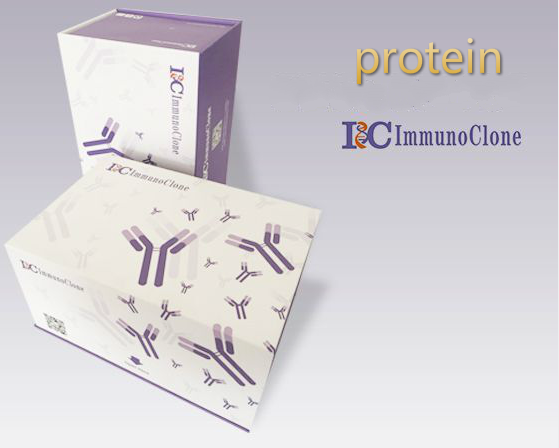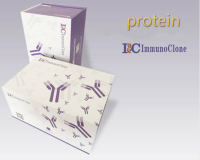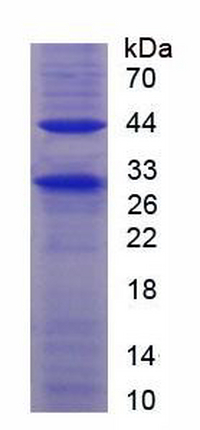

客服电话:021-61998208


CD4分子(CD4)重组蛋白
CD4分子(CD4)重组蛋白
Recombinant Cluster Of Differentiation 4 (CD4)
CD4mut; p55; T-cell surface glycoprotein CD4; T-cell surface antigen T4/Leu-3
[ PROPERTIES ]
Source: Prokaryotic expression
Host: E.coli
Residues: Lys27~Thr394
Tags: N-terminal His Tag
Subcellular Location: Membrane
Purity: > 95%
Traits: Freeze-dried powder
Buffer formulation: 20mM Tris, 150mM NaCl, pH8.0, containing 1mM EDTA, 1mM DTT,
0.01% SKL, 5% Trehalose and Proclin300.
Original Concentration: 200µg/mL
Applications: Positive Control; Immunogen; SDS-PAGE; WB.
(May be suitable for use in other assays to be determined by the end user.)
Predicted isoelectric point: 7.6
Predicted Molecular Mass: 48.0kDa
Accurate Molecular Mass: 30/44kDa as determined by SDS-PAGE reducing conditions.
Phenomenon explanation:
The possible reasons that the actual band size differs from the predicted are as follows:
1.Splice variants: Alternative splicing may create different sized proteins from the same gene.
2. Relative charge: The composition of amino acids may affects the charge of the protein.
3. Post-translational modification: Phosphorylation, glycosylation, methylation etc.
4. Post-translation cleavage: Many proteins are synthesized as pro-proteins, and then cleaved
to give the active form.
5. Polymerization of the target protein: Dimerization, multimerization etc.
[ USAGE ]
Reconstitute in 20mM Tris, 150mM NaCl (pH8.0) to a concentration of 0.1-1.0 mg/mL. Do notvortex.
2 / 4
[ STORAGE AND STABILITY ]
Storage: Avoid repeated freeze/thaw cycles.
Store at 2-8ºC for one month.
Aliquot and store at -80ºC for 12 months.
Stability Test: The thermal stability is described by the loss rate. The loss rate was determinedby accelerated thermal degradation test, that is, incubate the protein at 37°C for 48h, and noobvious degradation and precipitation were observed. The loss rate is less than 5% within theexpiration date under appropriate storage condition.
[ SEQUENCE ]
特别提示:本公司的所有产品仅可用于科研实验,严禁用于临床医疗及其他非科研用途!









